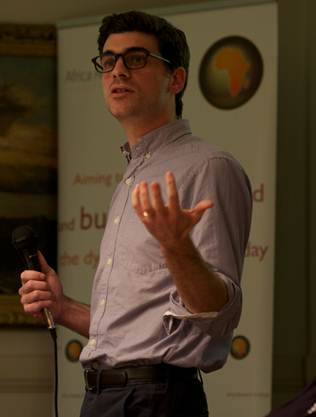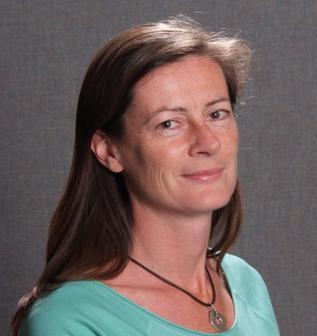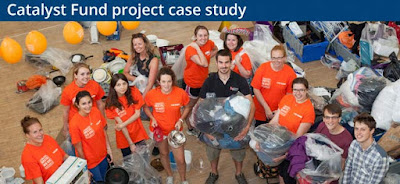A mobility crisis has arisen in Yangon, Myanmar, as growth-induced congestion is slowing travel times for the city’s widely used buses, thereby incentivising car ownership and increasing traffic further. The key cause is poor governance, which manifests itself through fragmented planning, low public infrastructure investment, and a ban on motorcycles and bicycles.
Home to more than 5 million people and producing nearly a quarter of Myanmar’s gross domestic product, this metropolis is once again buzzing with activity as it reopens to the world after decades of military rule. But Yangon’s potential to serve as an engine of economic growth for the nation is being severely undermined by a mobility crisis. As the economy speeds up, the city slows down.
Journey times have skyrocketed in the city as the streets become ever more crowded. Some estimates suggest travel speeds at peak times have dropped from 38 km/h in 2007 to 10-15 km/h in 2015. This slowdown matters for several reasons. First, such high congestion places a significant drag on productivity by raising the cost of doing business and generating friction in the greater Yangon labour market. It is harder for workers to commute to the jobs they are qualified for. Second, the worst affected are the poorest. As a group, they spend the highest share of income on transport and the most time in traffic, which impedes poverty reduction efforts and adds to inequality. Third, air pollution has reached dangerous levels. The World Health Organization finds that Myanmar has some of the worst air pollution in the world, due in part to “inefficient modes of transport”.
The proximate causes: liberalisation and economic growth
Yangon’s mobility crisis is a positive indicator insofar as it reflects robust economic growth. Estimating the city’s growth rate is challenging due to a lack of economic data. However, by exploiting satellite images of night-time lights, which can be used as a rough proxy for economic activity, we can get an idea of the pace of growth. Figures 1 and 2 show images of Yangon at night in 2003 and 2013, respectively. Over this period, the level of luminosity nearly tripled, which we estimate translates into an impressive average annual growth rate in output of 8.5%. Growth appears to have been accelerating, given our estimate that the city grew at an average annual rate of 11.2% between 2008 and 2013.
 |
| Figure 1: Luminosity in Yangon Region, 2003 |
 |
| Figure 2: Luminosity in Yangon Region, 2013 |
Since 2011 this growth has been accompanied by a large expansion of personal automobile usage. It was virtually impossible to import automobiles prior to 2011 due to heavy restrictions imposed by the military. The relaxation of vehicle import restrictions, as part of a wider range of liberalisation reforms in recent years, has revealed extensive pent up vehicle demand and allowed a precipitous decline in car prices. Yangon’s burgeoning middle class has jumped at the opportunity to acquire newly imported vehicles and escape the deteriorating bus system. Official figures indicate that there was a 153% increase in registered vehicles in Yangon between 2011 and 2014 alone.
The congestion incentive spiral
The surge in automobile ownership has set in motion a “congestion incentive spiral” that has exacerbated traffic. Prior to liberalisation, buses were by far the dominant mode of transport. The bus system was run as a competitive cartel with a restricted number of private bus owners competing for passengers on similar routes. This incentivised overcrowding, reckless driving, and under-investment in bus fleet maintenance — all of which contributed to congestion and a poor passenger experience.
For those who can afford a car, abandoning the buses is rational. Cars are more comfortable and always quicker than buses. The ability to go directly from origin to destination without stops or transfers significantly reduces the overall journey time. There remains a dilemma: the more people abandon buses, the worse traffic becomes, and the greater the incentive to use private transport. It is an incentive spiral that can only be broken by dramatically increasing the costs of individual car use or by providing an attractive alternative.
Fragmented governance as a root cause
There is no ready alternative to buses and cars in Yangon due to a legacy of poor planning, low public investment, and the fact that motorcycles and bicycles are banned in the city. In fact, there has been no significant investment in public transport infrastructure since the colonial era when the city’s Circular Railway was built. The railway is running and affordable, but its slow speed and limited coverage mean it attracts only a small fraction of Yangon’s commuters.
The emergence of the dysfunctional private bus cartel was an organic response to the lack of alternatives, which in turn was a consequence of the systematic lack of public investment in transport infrastructure and services. This crisis of governance persists today despite the energetic efforts of the current Chief Minister of Yangon, who has driven an impressive reform of the bus system by breaking the cartel and introducing proper public oversight.
An improved bus system, however, will not be enough to break the congestion incentive spiral now that so many people have purchased cars. What is required is a comprehensive and financially viable transport plan developed and implemented by a public transport authority with a metropolitan remit. Currently, the delivery of city infrastructure and services is fragmented across three tiers of government and dozens of agencies and offices. This fragmentation of governance is the true underlying cause of Yangon’s mobility crisis.
A path forward: governance then infrastructure
It is important to frame the problem as a mobility crisis, not a traffic congestion crisis. People can move through cities in many ways, and all large cities have traffic congestion challenges. More prepared cities do not suffer from mobility crises because other transport options are available: bus rapid transit systems that are insulated from traffic; cycling infrastructure; rail networks; and pedestrian-friendly mixed-used developments that reduce the demand for vehicular travel.
Relatively modest public investment could help Yangon. Nonetheless, a bus rapid transit plan announced in 2014 unfortunately appears to have been shelved. The mostly flat topography of Yangon is conducive to cycling. Relaxing restrictions on the use of bicycles on key arteries and in the city centre, combined with modest investments in cycling infrastructure, could provide an affordable alternative mode of individualised transport in the city.
These initiatives require significant governance reforms to succeed. Yangon is projected to join the ranks of the world’s mega-cities (i.e. cities with 10 million or more inhabitants) by 2030. With this growth comes physical expansion, which alters commuting patterns and transport demand. Without a concerted and sustained intervention by a metropolitan-scale transport authority with a mandate to maximise urban mobility, Yangon’s transit woes will surely worsen and further undermine the city’s enormous potential to support Myanmar’s economic renaissance.
This blog is written by Dr Sean Fox (Political Economy of Development & Urban Geography) and originally hosted on the IGC blog.

































